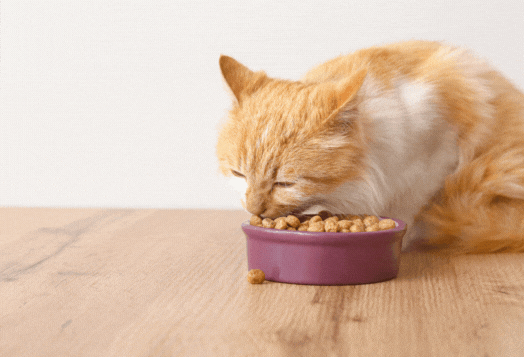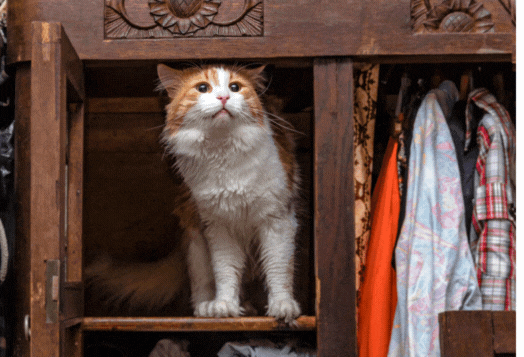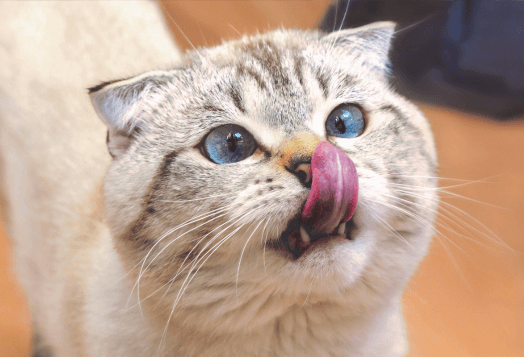Recognising pregnancy symptoms in cats early on allows for better care and preparation, ensuring a healthy pregnancy and delivery for your pet.
Let’s dive deeper and understand the signs so that you can provide proper care.
Early Signs of Pregnancy in Cats
Cats can get pregnant as early as 4 months old. That's why it's crucial to watch for your cat’s pregnancy symptoms even in young cats who haven't been spayed yet.
The first few weeks of cat pregnancy can be tricky to spot, but there are several telltale signs that your feline friend might be expecting. These early symptoms usually appear around 2-3 weeks after conception.

1. Change in Appetite
Just like humans, pregnant cats experience appetite changes. Your cat might suddenly become hungrier than usual, asking for food more often or eating larger portions. On the flip side, some cats experience morning sickness and may eat less or even vomit occasionally during the first few weeks. Don't worry – this is completely normal and usually passes as the pregnancy progresses.
2. Behavioural Changes
Pregnancy hormones can make your cat act differently. She might become more affectionate, seeking extra cuddles and attention from you. Some cats become clingy and follow their owners around the house. Others might become more withdrawn or territorial. These mood swings are perfectly normal as her body adjusts to the pregnancy.
3. Increased Weight and Tummy Enlargement
Around the third week of pregnancy, you might notice your cat's belly starting to round out slightly. The weight gain is gradual at first, typically 1-2 pounds throughout the entire pregnancy. Her waist will become less defined, and her tummy will feel firmer when gently touched.
4. Nipple Changes
One of the most reliable early signs is changes to your cat's nipples. They'll become larger, pinker, and more prominent. This process is called "pinking up" and usually happens around 15-18 days after conception. The nipples may also feel warmer to the touch and appear slightly swollen.
💡 How early can I tell if my cat is pregnant? The earliest reliable signs appear around 2-3 weeks after conception, with nipple changes being one of the first noticeable symptoms of a cat’s pregnancy.
Middle Stages of Cat Pregnancy
As your cat enters the middle stage of pregnancy (weeks 4-6), the signs become more obvious and the kittens begin developing rapidly inside her womb.

1. Increased Restlessness and Nesting Behaviour
Around week 4-5, your pregnant cat might start acting restless and begin searching for the perfect spot to have her kittens. She'll explore closets, under beds, or other quiet, dark places. This nesting behaviour is instinctual – she's looking for a safe, comfortable spot where she feels secure enough to give birth and care for her babies.
2. Ultrasound and Vet Confirmation
The most reliable way to confirm pregnancy is through a veterinary ultrasound, which can be done as early as 21 days after conception. Your vet can not only confirm the pregnancy but also give you an idea of how many kittens to expect. This visit is crucial for ensuring everything is developing normally and planning for the birth.
3. Changes in the Cat's Coat
Many pregnant cats develop a softer, shinier coat due to hormonal changes. Her fur might feel silkier to the touch and appear more lustrous. Some cats also experience slight shedding changes, though this varies from cat to cat.
💡 Did You Know? A cat's pregnancy lasts about 65 days on average – that's roughly 9 weeks, which is much shorter than a human pregnancy.
How to Care for a Pregnant Cat
Caring for a pregnant cat isn't complicated, but it does require some adjustments to ensure both mom and babies stay healthy throughout the pregnancy.
1. Provide a Balanced Diet
Your pregnant cat needs high-quality food rich in protein and nutrients to support her health and the average life expectancy of a cat. Switch to kitten food or a high-quality adult cat food with at least 30% protein content. Increase her food portions gradually by the end of pregnancy; she might eat 25-50% more than usual. Always provide fresh water and consider adding wet food to her diet for extra hydration.
Pregnancy Stage | Food Amount | Special Notes |
Weeks 1-4 | Normal portions | High-quality adult food |
Weeks 5-6 | 25% more food | Switch to kitten food |
Weeks 7-9 | Up to 50% more | Free-feeding recommended |
2. Keep Her Comfortable and Safe
Create a calm, stress-free environment for your pregnant cat. Keep her indoors to protect her from dangers like fights with other cats, diseases, or accidents. Provide cosy spots where she can rest undisturbed, and avoid making major changes to your home routine that might stress her out.
3. Regular Veterinary Visits
Schedule regular check-ups with your veterinarian throughout the pregnancy. These visits help monitor the health of both mother and kittens, catch any potential problems early, and prepare for delivery. Your vet might recommend prenatal vitamins or dietary supplements based on your cat's specific needs.
💡Did You Know? Mother cats can have anywhere from 1 to 9 kittens in a single litter, with the average being 4-5 kittens.
What to Expect During the Final Stages of Pregnancy
The final weeks of pregnancy are when things get exciting, and when you need to be most prepared for the arrival of the kittens.

1. Preparation for Delivery
Set up a quiet birthing area away from household traffic. A large cardboard box lined with clean towels or blankets works perfectly. Place it in a warm, dimly lit area where your cat feels safe. Keep supplies handy: extra towels, a heating pad on low setting, and your vet's emergency contact information.
2. Recognising Signs of Labour
Labour usually begins with your cat becoming restless and vocal. She might pace, pant, or seem unable to get comfortable. You'll notice increased nesting behaviour as she arranges and rearranges her bedding. Her body temperature will drop slightly (below 100°F), and she might refuse food. These signs typically appear 12-24 hours before active labour begins.
3. Timeframe and Duration of Labour
Labour typically lasts 12-24 hours for first-time mothers, though it can be shorter for experienced mothers. The active pushing stage usually lasts 2-6 hours. Kittens are born 15-60 minutes apart. If your cat has been actively pushing for more than an hour without producing a kitten, contact your veterinarian immediately.
Looking for someone to monitor your cat during labour? Pyng's pet sitters can provide experienced support during this crucial time.
Summary of All Pregnancy Stages:
|
Common Mistakes to Avoid During Cat Pregnancy
Even well-meaning cat owners can make mistakes during their pet's pregnancy. Here are the most common errors and how to avoid them.
1. Overfeeding
While pregnant cats need more food, overfeeding can lead to obesity and delivery complications. Increase portions gradually and focus on high-quality nutrition rather than just quantity. Fat cats can have difficulty during labour, and overweight kittens can cause birthing problems.
2. Lack of Monitoring
Don't assume everything is fine just because your cat seems normal. Monitor her eating habits, behaviour, and physical condition daily. Keep track of important dates like when you first noticed symptoms and when the kittens are due. This information is valuable for your veterinarian.
3. Delaying Vet Visits
Some owners think cats can handle pregnancy entirely on their own, but veterinary care is essential. Delaying check-ups can mean missing serious complications like infections, nutritional deficiencies, or developmental problems with the kittens.
Your Cat Needs Support, Rest, and the Right Help
Every cat’s journey through pregnancy is unique — some show signs early, others keep it well-hidden till the kittens are nearly here. Whether you’re certain your cat is expecting or just beginning to observe the clues, being attentive, patient, and gently prepared is the best way to support her.
If you ever need a helping hand, maybe you're travelling, or just need someone to care for your pet while you run errands, you can find trusted pet sitters and pet boarders on Pyng’s pet services who understand how to care for cats.
Your cat’s instinct knows the way. You just need to be there, in all the ways that count.




